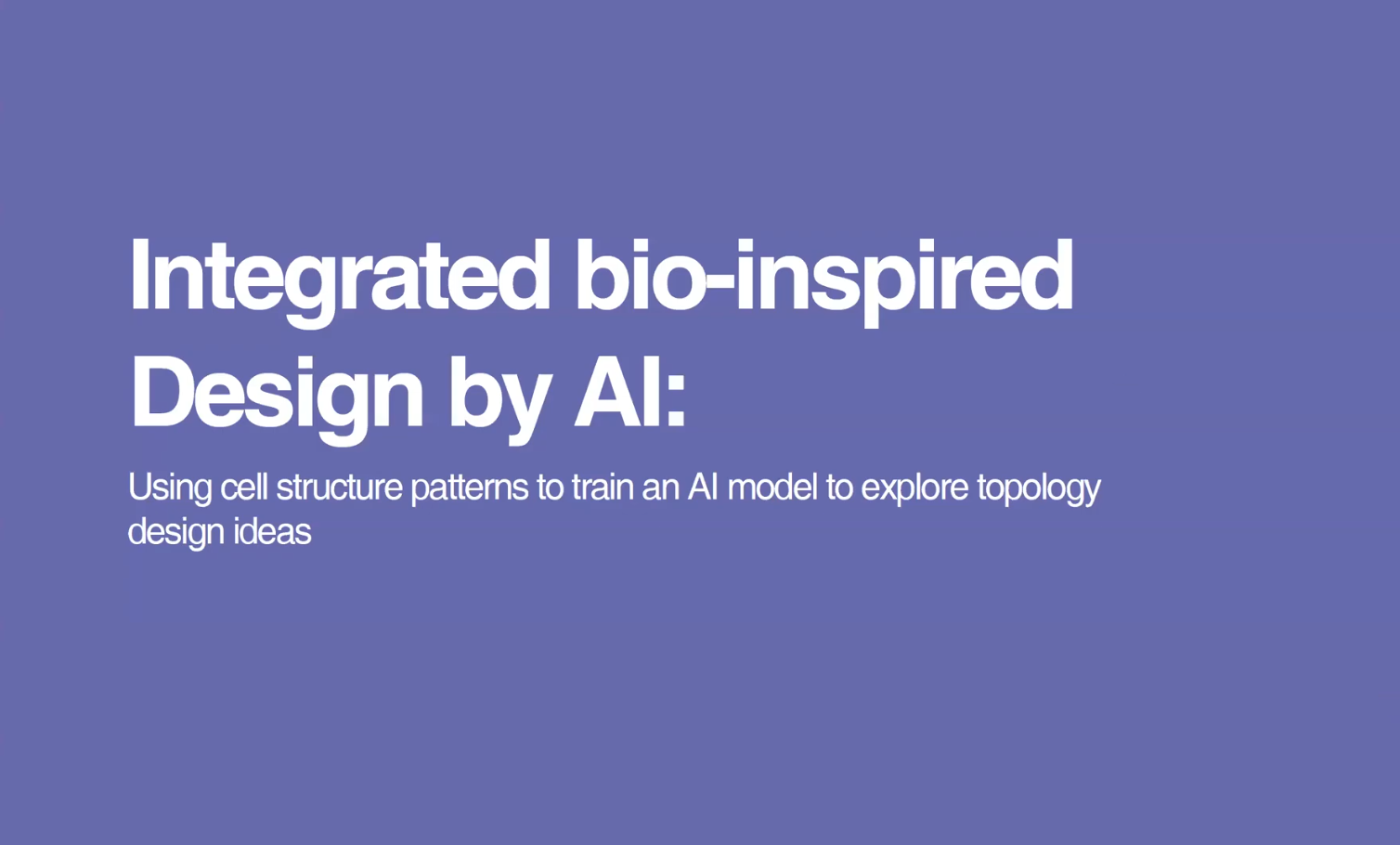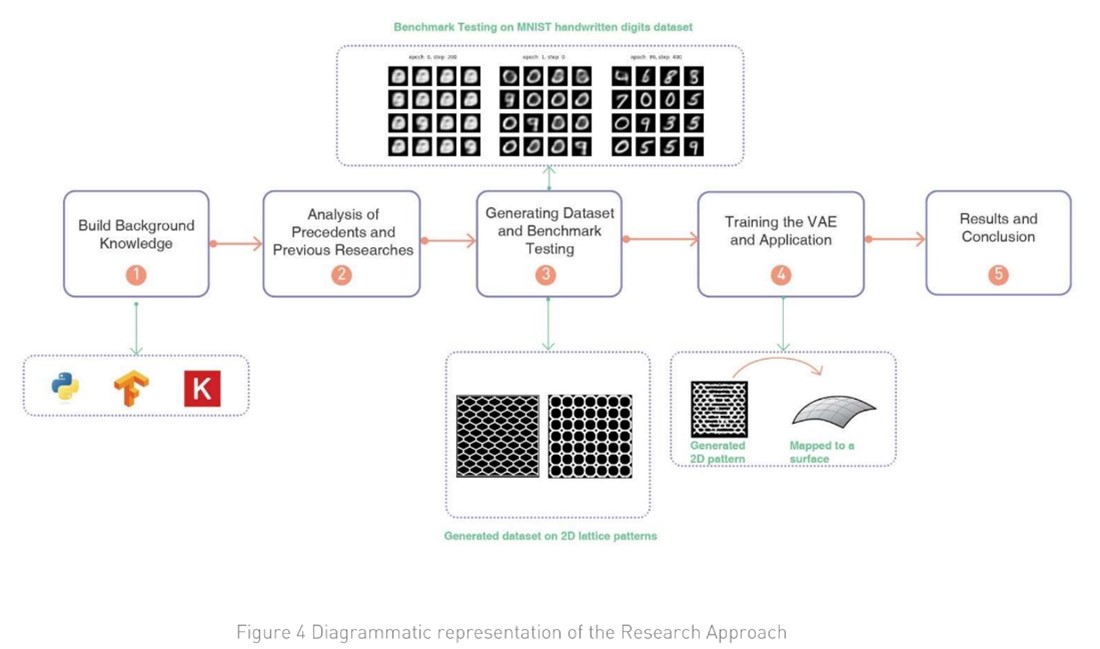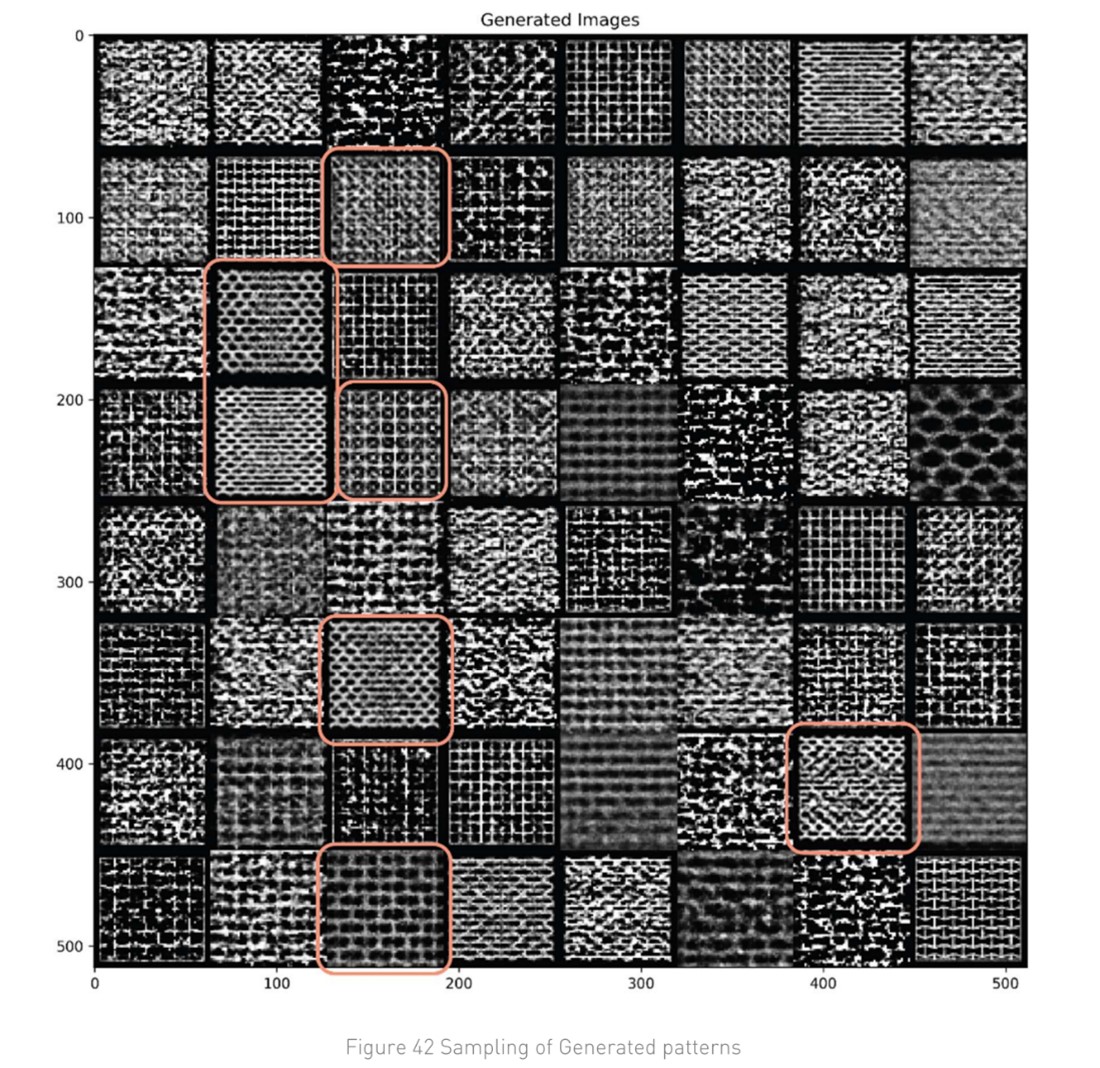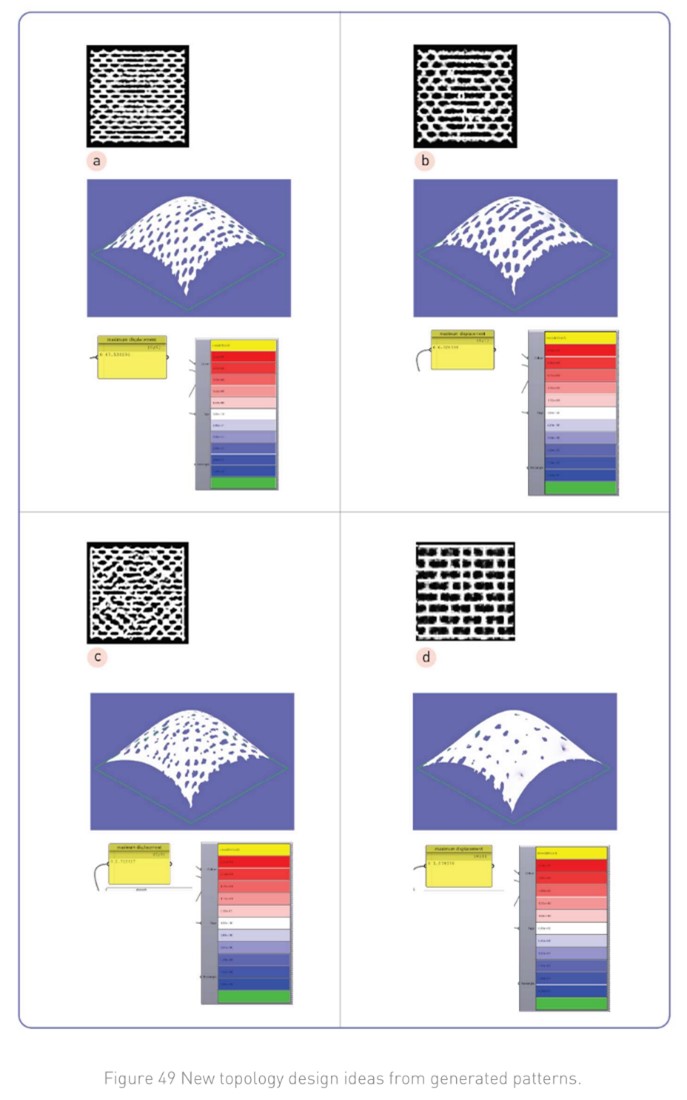Thesis: Integrated bio-inspired Design by AI – Baruah
-
Intro
-
Technical Aspects
Information
| Primary software used | Python |
| Software version | 1.0 |
| Course | Computational Intelligence for Integrated Design |
| Primary subject | AI & ML |
| Secondary subject | Machine Learning |
| Level | Advanced |
| Last updated | November 27, 2024 |
| Keywords |
Responsible
| Teacher | |
| Faculty |
Thesis: Integrated bio-inspired Design by AI – Baruah 0/1
Thesis: Integrated bio-inspired Design by AI – Baruah
Integrated bio-inspired Design by AI: Using cell structure patterns to train an AI model to explore topology design ideas – Namrata Baruah
The purpose of this thesis is to investigate design concepts using AI-generated patterns in shell structures. After selecting perforation patterns found in nature, the author trains an AI model to generate new patterns based on the training data. The aim of this research is to compare natural and AI-generated patterns to verify if the AI model generates a bigger variety of patterns while maintaining good structural performance.

APA: Baruah, N. (2022). Integrated Bio-Inspired Design by AI [Master thesis, TU Delft]. https://repository.tudelft.nl/record/uuid:6cc837f2-f9ff-4f23-af87-1ac4ba7fb5e6
Here you can find the repository of the master thesis Integrated bio-inspired Design by AI – Baruah
Project Information
- Title: Integrated Bio-Inspired Design by AI
- Author(s): Namrata Baruah
- Year: 2022
- Link: https://repository.tudelft.nl/record/uuid:6cc837f2-f9ff-4f23-af87-1ac4ba7fb5e6
- Type: Master thesis, Building Technology
- ML tags: Variational Autoencoder
- Topic tags: Generative Design, Structure Design
Thesis: Integrated bio-inspired Design by AI – Baruah 1/1
Technical Aspectslink copied
Software & Plug-ins Used
- Rhinoceros, Grasshopper for modelling the patterns of the cellular solids and testing of the AI model
- Python using Tensor-Flow, Keras library for writing the AI model and CNN
- Google Collab for coding the VAE model
- Rhinoceros, Grasshopper, Karamba for the FEM analysis (structural performance analysis)
Workflow

Process
The AI model used in this thesis is a Variational AUtoencoder (VAE).
The steps followed in building the model are:
- Creating a continuous and uniform database by defining the parametric grashopper model variables such that generated 3D models have similarities
- Formulating a parametric model in Grasshopper to create 3D models of lattice patterns
- Augmentation of the Grasshopper-generated data for the deep convolutional neural networks to run properly
- Training a VAE model with 80% of the data in the dataset and using the rest of the data to validate the training

Following the training of the VAE model, numerous variations of 2D image patterns were generated. The author selected the most distinct patterns and extracted the sharper ones to edit.

To use the generated patterns in the conceptual design phase of shell structures, a workflow was created. It contains the following steps:
- Extraction of the geometries from a 2D image which is translated to a data structure that can be used to control a parametric model
- Creating the shell form where the pattern will morph onto
- Morphing the pattern on the shell
- Performing FEM analysis on the morphed shell to check its structural performance
LIMITATIONS: The dataset used to train the AI contains only 2D images of cellular solid structures. The dataset was limited to small number of patterns.
Write your feedback.
Write your feedback on "Thesis: Integrated bio-inspired Design by AI – Baruah"".
If you're providing a specific feedback to a part of the chapter, mention which part (text, image, or video) that you have specific feedback for."Thank your for your feedback.
Your feedback has been submitted successfully and is now awaiting review. We appreciate your input and will ensure it aligns with our guidelines before it’s published.
